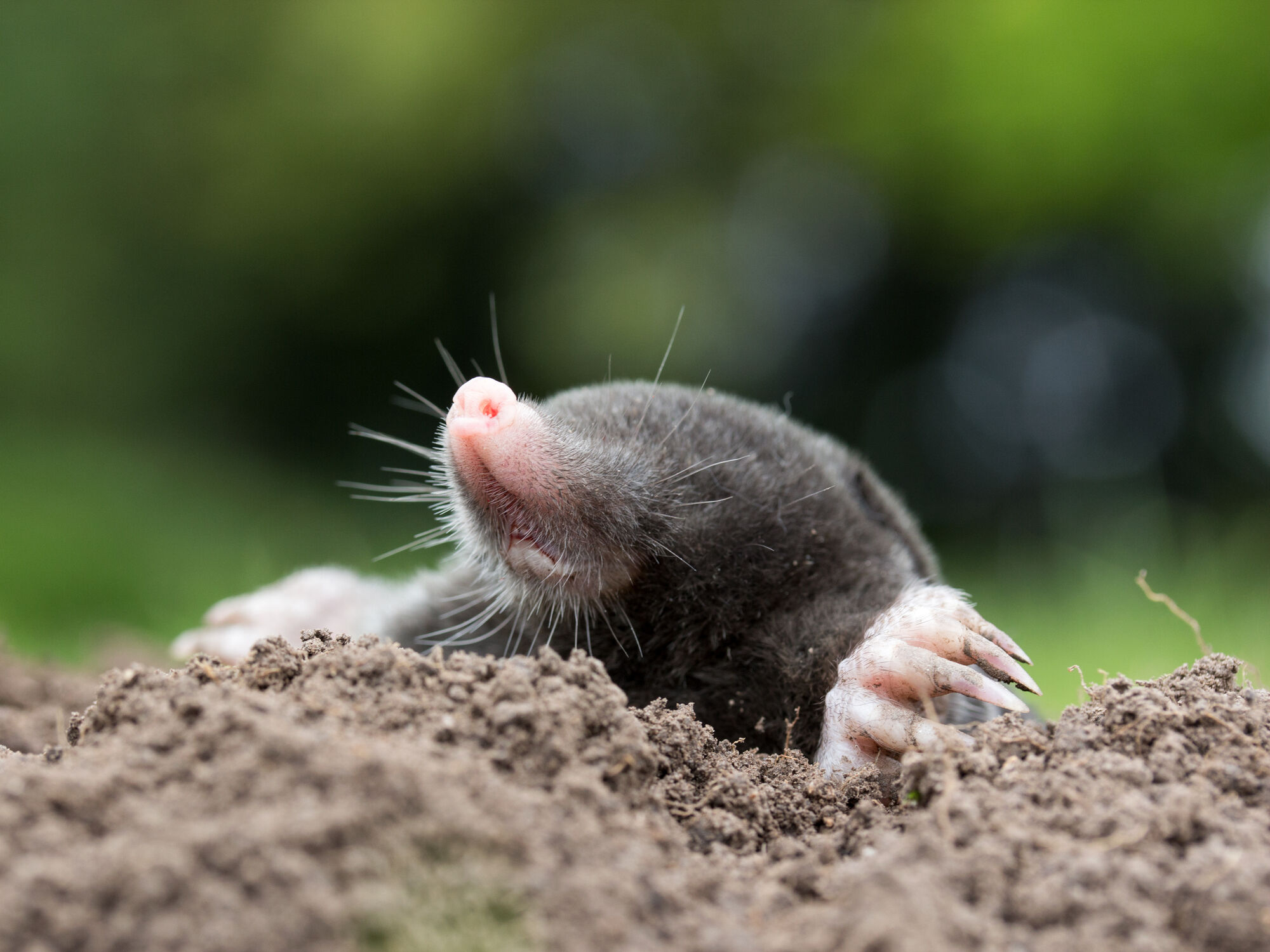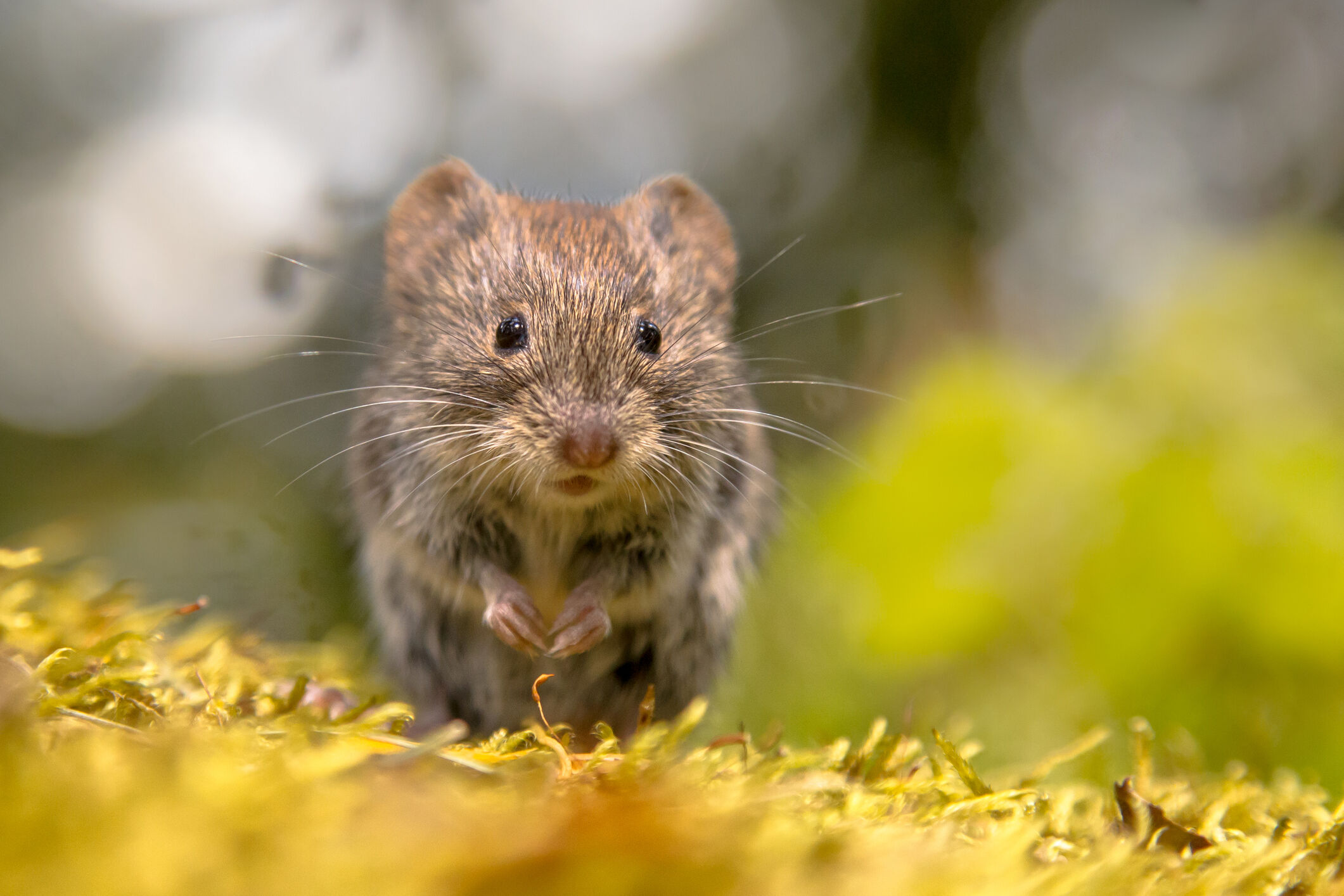
Mike returns to Chantilly next month!
Mike will appear on Saturday and Sunday Feb. 22 and 23 at the long-running Capital Remodel & Garden Show at the Dulles Expo Center in Chantilly. Exact times and details are coming soon, but expect to hear about tomatoes, organic lawn care, compost — and, of course — answers to your toughest garden questions! (Or evasion of said questions, which is more fun …)
Moles a problem? Could it be voles instead?
Sue in Ellicott City has three questions. Here’s the first one:
“Is there a humane way to get rid of moles?”
My weasel word answer here is “maybe.” But first we have to positively ID the pest mammal.
Moles — M O L E S — live under lawns and make raised tunnels that damage the grass, but they don’t eat plants; they only eat meat: earthworms, beetle grubs and cicada larvae.
Voles — V O L E S — make little holes everywhere and feed only on plants — especially tasty spring bulbs like tulips and crocus and the roots of plants like Hosta. In summer, you can often see the ‘lanes’ of tamped-down grass they make as they skitter across lawns in the evening.
Voles are the primary food of owls; and raptor perches — crossbeams placed about six feet off the ground — will often end a vole infestation.

OK — back to moles
Mole repellent products containing castor oil are the first line of defense, Sue. Available in granular and liquid form, they release a nasty smell into the soil that often chases moles (and voles) over to the neighbor’s turf. Look for products with the highest levels of active ingredient (which, again, is castor oil).
Next up are products that eliminate lawn grubs, one of the primary food sources for moles. (Keep reading to learn your natural grub control options below.)
If getting rid of the grubs doesn’t get rid of the moles, your last option is lethal traps that can be difficult for homeowners to use properly; unless you’re really good at this kind of thing, you’re probably better off hiring a professional.
Don’t waste your money on gimmicks or folklore: Little windmills, pinwheels, sonic devices, Juicy Fruit gum and poison gummy worms do not work. Moles only eat meat — they won’t touch gum or gummies.
Outdoor cats also work, but I’m in enough trouble without recommending anything like that.
Gross and greasy grimy grubs
Sue in Ellicott City is battling moles and writes (for her second question):
“How do you get rid of those nasty grubs in the soil?”
Good thinking Sue, as grubs — the larval form of Japanese and other Scarab Beetles — are the number one food source of moles.
There’s nothing you can do right now, but in the spring, you can spread BTG, a new biological control available under the name grubHALT from Gardens Alive. Although it works better in the late summer, BTG should take out a good number of grubs in the Spring.
After the soil warms up, beneficial nematodes step up. These microscopic predators (available via mail order and from the hippest independent garden centers) attack and kill white grubs before they can emerge as flying adult beetles.
And finally, milky spore disease works well when applied in late summer, when young grubs are actively feeding on the roots of your lawn. Unfortunately, this decades-old biological control does not work in the Spring, when grubs are not feeding.
Oh and of course all of the above are nontoxic and grub specific.
Those stink bugs owe you rent!
For her third and final question Sue in Ellicott City writes:
“Why are stink bugs invading my house again?”
They are not, Sue. Any stink bugs you see indoors now came into your home in the fall, when they gather on the South and East facing sides of light-colored homes and look for little nooks and crannies they can use to get inside and hibernate — just like they do in caves in their native Korea.
They’re waking up now, looking for ways to get out — which is foolish because they would have frozen to death outside last week and wouldn’t do well even now. The same is true of multicolored Asian ladybugs, conifer seed bugs and other “home invading insects.” They find ways to sneak in the Fall and then realize It’s much harder to get out when they wake up.
Just crush any you see with a tissue (not your bare hands; remember their name is STINK bugs) or buy one of those insect trapping bug vacs, like the highly rated one that Hammacher-Schlemmer sells.
Seed catalog of the day!
The new catalog from Gurney’s Seed and Nursery Company contains a plethora of enticing varieties.
Like “Yum Yum” a tri-color mix (red, yellow and orange) of miniature sweet bell peppers that are ready to pick a speedy 55 days after planting: that’s versus 80 days to 100 days for full sized bell peppers! And these little sweeties are seedless!
With peppers, tomatoes and other ‘started indoor’ crops, ‘days to maturity’ means the number of days from when you put a six to eight week old ‘start’ outdoors into warm soil until you get the first ripe fruits. With sweet corn, sting beans and other ‘direct seeded’ crops it’s the number of days from planting the seed to ripeness.
Think your climate is too warm to grow rhubarb? Gurney’s traveled to Australia to find a new heat-tolerant variety they call “Kanra-Rhu,” said to ripen fully red without any of those annoying green or pink areas. They add that they were still harvesting this rhubarb into mid-July in their Ohio test gardens (which I had the pleasure of visiting last season).
How about a mix of heirloom cutting lettuces that contains 500 seeds for less than four bucks? Or “Smooth Criminal” — a hybrid summer squash (like zucchini, but a yellow ‘crookneck’ type) that produces its fruits on a stalk instead of the ground?
BONUS: Order before the 29th and get $25, $50 or even a hundred bucks off! That’s $25 off an order of $50; $50 off an order of a hundred bucks; and $100 off an order of two bills. See it all or request a catalog online.







